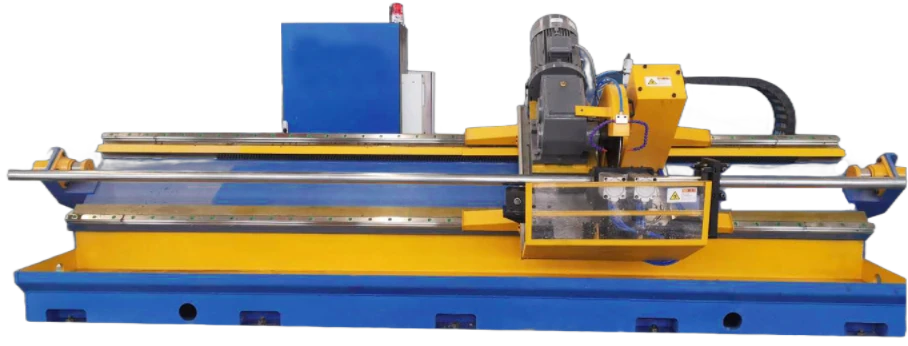Copper Pipe Production Equipment for Efficient Manufacturing Processes and Quality Assurance
The Manufacturing Process of Copper Pipe Machinery and Techniques
Copper pipes have long been regarded as an essential component in various industries, including plumbing, HVAC, and electrical applications. Their durability, ductility, and excellent thermal and electrical conductivity make them a preferred choice for many applications. The manufacturing of copper pipes involves a sophisticated array of machinery and techniques designed to ensure high-quality production while maximizing efficiency. In this article, we will explore the different types of machinery used in the manufacturing process, the stages of production, and the innovation driving the industry forward.
Raw Material Preparation
The manufacturing process begins with the preparation of raw copper. Copper is typically sourced in large quantities as copper cathodes, which are then melted and cast into billets or rods. The quality of these raw materials is paramount, as impurities can compromise the structural integrity of the finished pipes. This stage involves melting furnaces equipped with precision temperature controls, as maintaining the correct temperature during the melting process is crucial.
Extrusion Process
Once the copper is prepared, the next step is the extrusion process, which shapes the copper into pipe form. Two primary types of extrusion machinery are used direct and indirect extrusion presses.
1. Direct Extrusion In this method, the heated copper billet is placed in a container and forced through a die to create a pipe. The pressure exerted must be carefully controlled to avoid defects in the pipe's structure.
2. Indirect Extrusion Here, the die is placed outside the cylinder containing the copper, and the ram pushes the copper metal into the die. Indirect extrusion reduces friction and can produce a cleaner finish on the pipes.
Both processes require sophisticated extrusion presses equipped with monitoring systems to ensure that parameters such as temperature and pressure remain within specified limits, thus enhancing the quality of the extruded pipes.
Rolling and Drawing
Following extrusion, the newly formed copper pipes undergo rolling and drawing processes to achieve the desired diameter and thickness
.copper pipe manufacturing machine

- Hot Rolling This involves passing the extruded pipe through rollers at high temperatures, allowing for significant thinning and elongation. Hot rolling is critical for achieving uniform thickness across all sections of the pipe.
- Cold Drawing This subsequent process involves drawing the pipe through a series of progressively smaller dies. Cold drawing refines the diameter and increases the pipe’s tensile strength. Advanced drawing machines with real-time data monitoring allow manufacturers to optimize the drawing process, ensuring consistency in the final product.
Annealing
One crucial stage in the manufacturing process is annealing, which reduces the brittleness often introduced during the rolling and drawing stages. Annealing involves heating the pipes in a controlled environment to a specific temperature and then gradually cooling them. Annealing furnaces are typically equipped with automated controls, allowing for precise temperature regulation and times, which is essential for achieving the desired hardness and ductility in the final product.
Surface Treatment and Quality Control
After the pipes have undergone annealing, they are subjected to surface treatment to remove any oxidation and prepare them for market. This can include processes such as cleaning, polishing, and applying protective coatings.
Quality control is an integral part of the manufacturing process. Advanced non-destructive testing methods, including ultrasonic testing and eddy current testing, help ensure that pipes meet industry standards and specifications. These testing methodologies allow manufacturers to detect defects, such as cracks or inclusions, without compromising the integrity of the product.
Automation and Industry 4.0
Modern copper pipe manufacturing is increasingly adopting automation and Industry 4.0 principles. Automated systems for handling materials, monitoring production processes, and managing inventory are becoming commonplace. Furthermore, the integration of IoT (Internet of Things) technology enables real-time data collection and analysis, driving efficiencies and enhancing quality control throughout the production chain.
Conclusion
The manufacturing of copper pipes is a complex process that combines traditional techniques with advanced technology. From raw material preparation to the final quality control stages, each step is critical in ensuring the production of high-quality copper pipes. As the industry continues to evolve with the integration of automation and smart technologies, manufacturers are poised to produce even more efficient and reliable products, meeting the increasing demands of various applications across sectors. The innovation in copper pipe manufacturing equipment promises a future of enhanced efficiency, sustainability, and quality.
-
High Frequency Straight Seam Welded Pipe Production Line-BzZhou Xinghua Machinery Equipment Manufacturing Co., LTD.|line pipe steel&welded gas pipeNewsJul.30,2025
-
High Frequency Straight Seam Welded Pipe Production Line-BzZhou Xinghua Machinery Equipment Manufacturing Co., LTD.|High Precision&Automated SolutionsNewsJul.30,2025
-
High Frequency Straight Seam Welded Pipe Production Line - BzZhou Xinghua Machinery Equipment Manufacturing Co., Ltd.NewsJul.30,2025
-
High Frequency Straight Seam Welded Pipe Production Line-BzZhou Xinghua Machinery Equipment Manufacturing Co., LTD.|Precision Welding, High EfficiencyNewsJul.30,2025
-
High Frequency Straight Seam Welded Pipe Production Line|BzZhou Xinghua|Precision Welding&EfficiencyNewsJul.30,2025
-
High Frequency Straight Seam Welded Pipe Production Line - BzZhou Xinghua|Precision Engineering&EfficiencyNewsJul.30,2025


